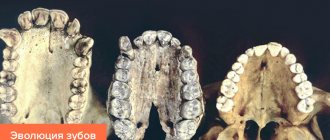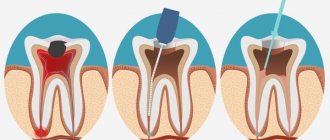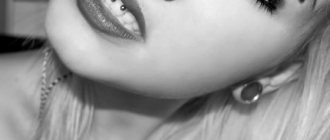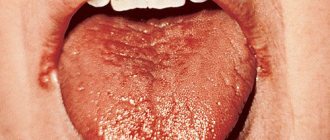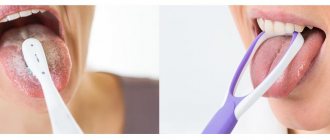The division of the tongue (snake, forked tongue) is called splitting (from the English split - “to separate”). This is an extreme type of body modification, which involves surgically dividing the organ into two parts along the midline, from tip to middle. The purpose of this procedure is self-expression, emphasizing one’s own individuality. Some people resort to this type of body fashion to match fashion and youth trends. Another meaning of splitting is to increase sensuality and expand opportunities in intimate relationships. Kissing and caresses with a forked tongue evoke more vivid sensual sensations in your partner. Most people who decide to split can control the two halves of the tongue separately using muscles.
Features and Precautions
Split tongue is a more complex type of body modification than puncture (piercing). It requires the participation of a qualified performer, preferably with medical, and even better, surgical education. It is not recommended to perform the manipulation at home or in “handicraft” conditions; this task should also not be entrusted to a first-year medical student. To avoid complications, sterile conditions, special drugs (anaesthetics, hemostatic agents) and professional surgical instruments are required. At home, these requirements are difficult to meet.
Before undergoing the splitting procedure, it is necessary to study the contraindications. They are as follows:
- Allergy to anesthetics is very dangerous, because... During the operation, anaphylactic shock and Quincke's edema may develop (an increase in the volume of the larynx and, as a result, the inability to breathe);
- problems with blood clotting, a tendency to bleed, taking anticoagulants (even simple aspirin) can lead to blood loss and require more complex manipulations;
- high temperature, fever and other acute conditions are a general contraindication to any interventions, including surgical division of an organ;
- Oncological diseases are also a general absolute contraindication.
Complications and health consequences should also be kept in mind. If the procedure is performed by an unqualified doctor, this can lead to unfavorable developments:
- infection and tissue necrosis;
- nerve damage.
While the infection is a reversible process that can be stopped with antibiotics, damage to the nerves responsible for sensation and movement is difficult to reverse. This will require more complex and expensive surgery, but a positive outcome is not guaranteed.
When the halves heal, the person still expects specific consequences:
- poor diction (usually it becomes more difficult for a person to pronounce the sounds D, T, R and other fricatives);
- increased hissing and whistling sounds;
- spitting saliva while speaking.
If the procedure is performed professionally, then the taste of food does not change during bifurcation.
Consequences
If you decide to have your tongue cut, you should also be aware of all the possible consequences:
- Once your tongue is cut with a scalpel, the tongue will not be able to return to its original state unless you resort to special surgery. But here it is worth noting that it will be more painful and expensive.
- A forked tongue will affect your diction. You will begin to lisp when speaking and will most likely spit.
- The first time after the incision, it will not only be painful to talk, but also to eat. After a few months, the pain will go away.
- If the work is done poorly by a master or if you decide to cut your tongue (under no circumstances!), it can fester, so splitting can only be carried out in a medical institution (a good BM studio must have the appropriate license).
We suggest you familiarize yourself with a blood vesicle on the mucous membrane of the mouth
How is splitting done?
Division into two halves is a surgical operation, it is performed under local anesthesia using a scalpel. Technically, this is a simple operation, although the preparation for the operation and the method of making the incision depend on the experience and chosen technique of the specialist. The standard bifurcation steps are:
- Before surgery, the patient is recommended to brush his teeth and remove white plaque with a brush, then rinse his mouth with an antiseptic solution;
- the doctor injects an anesthetic directly into the tongue;
- With a special surgical instrument, the master clamps the tongue in the middle and leaves the clamp for 30-45 minutes to stop the blood supply at the incision site;
- Using a sterile scalpel, the doctor cuts the tongue into two parts;
- A piece of gauze with an antiseptic is placed between the halves of the fabric.
This algorithm may vary depending on the skill and experience of the performer. Applying a clamp helps keep blood loss to a minimum. Other specialists, in addition to the incision, sutured the two halves to stop bleeding and reduce the risk of tissue infection.
In rare cases, splitting can be performed with a laser, but for this you need to find a specialized medical institution that provides this type of service. In practice, it is very difficult to find, so in most cases, bifurcation is performed surgically.
First aid for a tongue injury
It is recommended to provide first aid for tongue wounds in accordance with the following algorithm:
- Stop the effect of the traumatic factor . Remove large shards of glass and pieces of food - clean the oral cavity as much as possible.
- If the injury is mechanical, stop the bleeding by packing the wound with cotton wool soaked in a 3% solution of hydrogen peroxide.
- In case of burns, rinse your mouth with plenty of cold water. Place ice on your tongue until the burning sensation stops.
- Rinse your mouth with chamomile decoction at room temperature or a weak solution of furatsilin (1:5000).
- Contact your doctor.
Note! Medical help may not be needed if the injury is a shallow cut or a minor burn. However, if the bleeding does not stop for a long time, the pain does not go away, or suppuration appears in the wound area, you should immediately seek the advice of a specialist.
Care, healing time and possible complications
The most difficult period after cutting is the first few days. At this time, a natural reaction of the body is observed - inflammation and swelling. The tongue will hurt and increase in size, making it impossible to speak and eat normally. Within 1-3 days, body temperature may increase - this is a normal phenomenon that can be controlled with antipyretic or anti-inflammatory drugs.
During the first week after the incision, you will have to eat pureed or liquid food. Sour, salty foods (marinades, sauces, tomato juice), spices and other foods that cause irritation will have to be excluded from the diet. After each meal, you should rinse your mouth with an antiseptic solution without alcohol.
To ensure healing occurs faster and the halves do not grow back together, it is necessary to use a special homeostatic sponge, which must be placed between the two parts and changed every 4 hours.
If all recommendations are followed correctly, healing occurs without complications within 1.5-2 months.
Split – sensations and healing
Day 0. Immediately after the operation. About the operation itself, we can say that the most painful thing is the anesthesia injections into the tongue. It won't feel any different anymore. But when it lets go... We advise our clients to buy painkillers in advance. So that you can get home without any problems.
And without painkillers it can be very painful, even to the point of painful shock and fainting along the way. Not much pleasant. And it is advisable to go with someone who will support you if you suddenly faint or something else. After you arrive home with a cut tongue, the best thing to do is go to bed. Cutting the tongue is a big stress for the body. And physical fatigue will take its toll.
Day 1-5. The most unpleasant day is the first day.
It's better to stock up on painkillers and stay at home. It is better to use soluble painkillers (solpadeine) or in tablets (nalgesin). It will be difficult to eat - you will need to stock up on mashed potatoes and other non-solid foods. Although some manage to eat normal food on the second day. But if they succeeded, this does not mean that you will be lucky too. Expect the worst so you don't get upset later.
For the first two or three days, drool will flow like a river, and it will be difficult to spit, since the tongue will be swollen and unusually double. So paper napkins will help you. Tablets or tea based on arnica (this is a mountain herb) have a good effect on healing. For example, Traumeel-S. Arnica reduces bleeding, the rest of the herbs in this homeopathic product increase regeneration, normalize blood pressure and provide a bunch of other useful therapeutic effects.
We invite you to familiarize yourself with Symptoms and treatment of major throat diseases
Some clients said that it even helped with acne. And, most importantly, these are herbal medicines, so there are no side effects from them. You should start using arnica the day before surgery, so that by the time of surgery there is already a “medicinal background” in the body. And immediately after the operation you need to increase the dose 4-5 times.
How to choose a specialist for splitting?
Typically, this type of service is provided by specialized salons that perform other cosmetic and minimally invasive operations - piercings, tattoos. Well-established large salons with a good reputation are the best choice. Before starting the procedure, check how sterile the instruments are. You have every right to do this, do not be afraid to offend the master. In self-respecting offices this should not be a problem, and a specialist will be happy to tell you and even demonstrate tools and equipment for sterilizing instruments. If you have the slightest doubt about the reliability of the master, it is better to refuse his services.
Learn more about split tongue incision
Split tongue - literally can be translated as “cleft of the tongue”, speaking in Russian cut. The fashion for cutting the tongue came to Russia relatively recently.
Split Tongue – A split or split tongue is also called a snake tongue due to the similar appearance of the tongue after the procedure.
History of appearance
The split of the language came to the “white people” from the countries of Southeast Asia and Polynesia along with sailors from merchant ships. There, the snake tongue was worn by those who worshiped the sea dragon or the mother snake. And for Europeans it was simply fashionable exoticism. But the youth adopted it, and all sorts of cult practices, so fashionable today, made splitting the language simply a fashionable trend in youth circles.
Split care
It only hurts to do anesthesia, but it only lasts half a minute. But after the entire procedure you will not feel anything. The anesthesia wears off 1.5-2 hours after administration, and the tongue will hurt for several hours. It will be painful to speak and sometimes you will produce too much saliva. It is painful to remove the sutures, but the process takes from two to ten minutes. After this, the pain decreases to almost zero.
How long does it take for a split to heal?
Complete healing takes 2-3 months. The stitches are removed after 5-7 days.
Is it true that the halves of the tongue can then grow together again?
On average, a split grows together by 10-30%, rarely more. There are preventative gymnastics: you just need to move the halves of your tongue apart. This will reduce the likelihood of strong split fusion.
How soon can I return to work?
It is better to talk as little as possible for the first 3-4 days. In general, the pain will not be severe after 2-3 days, but some people stay at home for 5-6 days. Diction will return to an acceptable level in a week or a week and a half.
What are the dangers and contraindications?
Relative contraindications - diabetes, anemia, poor blood clotting, infectious diseases. In such cases, healing will take longer. Absolute contraindication: the vessels under the tongue are not parallel, but cross the midline.
Will it be possible to stitch the tongue when I get tired of splitting?
Can. But, most likely, you will get so used to it that the desire to part with them will pass by itself. In addition, after suturing the tongue, a dense scar will remain inside, which can significantly reduce the flexibility of the tongue.
Doesn't it bother you to eat?
At first it is difficult to eat and talk, since the tongue swells greatly and occupies almost the entire mouth, and the teeth press on the sides. When the swelling subsides (which is 4-6 days), it becomes easier. But for the first two weeks there may be a feeling that the tip of the tongue is being bitten.
How to move the halves?
You can only move two halves in one direction (up and down). Over time this will become easier and easier. To move them relative to each other, you need to move them towards each other, then one will jump up and the other down. That's the trick.
How to brush your teeth?
Carefully. If you feel pain or burning, it is better to simply rinse your mouth.
What to do?
Day 0:
10-30 minutes after the procedure, the anesthesia will wear off and it will become painful. The best thing to do is go home and go to bed. If pain interferes with sleep (and life), do not hesitate to take Solpadeine or Nalgesin.
Day 1-6:
The next morning the tongue will completely swell. If it hurts a lot, we take a painkiller. We eat what we can. We relieve swelling with ice-cold drinks: water or herbal tea is better. After any meal, rinse your mouth.
What is normal: white fabric at the seam. This is new skin that grows from the cut. Teeth marks on the sides of the halves are also normal. The swelling is just very strong, and in the morning a dent from the teeth may form. Plaque on the tongue is usually formed due to the microflora of the mouth disturbed by rinses, but as healing progresses, the microflora is restored and the plaque disappears.
Day 6-14:
As a rule, after removing the stitches on the 5-6th day, it immediately becomes much easier. You can eat normally, but you need to limit yourself to salty, hot and spicy foods. The tongue should no longer hurt or cause severe discomfort. You need to rinse your mouth, but less often (2-3 times a day), so as not to disturb the natural microflora of the oral cavity with the rinse.
Day 15-30:
If the care was correct in the previous two weeks, then by this time the tongue will almost heal, and you can begin to stretch. Otherwise, the tongue may grow together a little (or a lot), starting from the middle.
You need to take the ends of your tongue with gauze napkins and slowly pull them in different directions. Essentially, this is the same stretch as splits. It is advisable to do this 2-3 times a day for a month to consolidate the result.
What not to do?
1. Do not touch the wound again. The less you disturb the wound, the faster it will heal.
2. Do not use peroxide, alcohol or other aggressive substances.
3. For at least one, and preferably two weeks, you will have to give up hot and spicy food and kisses. Do not forget that the oral cavity is the most unhygienic place in the human body.
4. Eliminate (or at least minimize) the consumption of alcohol, coffee, cigarettes and aspirin. All this dilates the blood vessels and increases bleeding, thereby prolonging the healing period.
5. Remember that modification is not healed by miracle cures, but by your body. Therefore, it is advisable to take doubly good care of hygiene (in this case, brush your teeth) and maintain immunity at a decent level (take vitamins, get enough sleep, drink a lot of clean water and exercise).
Day 31 and beyond:
Is it normal
Q. After the anesthesia has worn off, I feel swelling and cannot speak clearly.
A. This is normal for the first couple of weeks. Therefore, we advise you to rest at home during this time.
Q. The swelling does not go away, speech is still impaired.
A. Swelling that lasts up to 7 days is normal. If it lasts longer, you need to contact the specialist and look for the cause (sometimes it is an allergy to food or mouthwash).
Radmila Yusupova
The young girl noticed her peculiarity in early childhood, when she wanted to appear on television. Mom said that people who appear on “TV” have something special and different from others.
Radmila began to carefully examine herself in the mirror, try out different facial expressions, and casually noted that her tongue, it turns out, was longer than that of others. After measurements, it turned out that the length of the girl’s tongue is more than 11 centimeters , and this is a record for Russia, which clearly looks like a TV story.
Now Radmila Yusupova is actively using her peculiarity and maintains pages on Instagram and YouTube, not hesitating to post photos and videos with masterly “language” tricks.
Radmila’s dream also came true - on the air of the “We Talk and Show” program, which airs on NTV, she was able to please her fans with tricks and even talk with Dzhigurda.
Tools and tongue cutting procedure
The tongue cutting procedure is usually done under local anesthesia. The incision is made using both a scalpel and other instruments. Let's talk about tools in more detail.
The best tool for this procedure is a coagulator. This is a device that generates high frequency current into an electric arc. A contact plate is applied to the recipient's body. And the cutting part of the device itself, which does the work, looks like a metal rod with a spatula mounted on a plastic handle. A barely noticeable spark goes from the tip of the shoulder blade to the tissues of the tongue. This is what creates sintering of tissues. The coagulator sinteres tissue protein while simultaneously sealing small vessels and veins, which allows the procedure to be carried out with a minimum amount of blood released.
A regular scalpel works less delicately. The specialist makes an incision, and all the small vessels and dissected tissues produce copious amounts of blood. During the procedure, the recipient can lose from three hundred to five hundred milliliters of blood. Which is quite normal.
And it’s absolutely cruel, but quite productive, some “would-be masters” make this procedure a children’s device for wood burning, such as “NEVA” and others. Don't believe me? But in vain! There are videos on YouTube you can watch. The edges of the wound surface, after such a procedure, hurt for a long time, from the burn. The burned edge, even if it is hemmed, heals unevenly, resulting in tatters. I have had to fix similar language splits more than once. Correction of split tongue may be necessary in a number of cases and for reasons beyond the control of the specialist. This is usually due to the healing period and improper behavior of the recipient.


